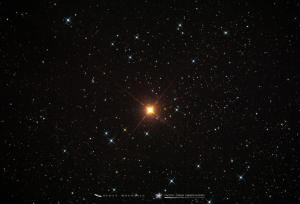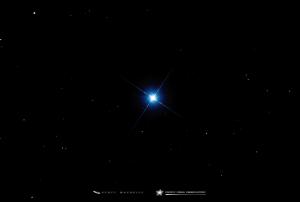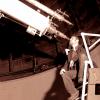Celebration of Space - June 20, 2025
Today, Friday, June 20, 2025 at 10:42 pm ET, Earth will arrive at the point in its orbit where the Northern Hemisphere is at maximum tilt, 23.4°, towards the Sun. This is the Summer Solstice, but most people know it as the first day of summer in the Northern Hemisphere. Today, the Sun will pass directly overhead at noon along the Tropic of Cancer, and will bring the shortest nighttime period of the year in the north. The Arctic Circle will see the Midnight Sun, and the Antarctic Circle will see Polar Night. This may be an awesome time for sipping lemonade around the BBQ, but the super short nights make it a tough time for astronomy. Allowing for only 4.5 hours of dark sky conditions outside of twilight. Regardless, beach days, summer break, BBQ, mosquitoes, wildfire smoke, awesome sunsets, picnics, and sunburn are here for the next few months. Whether you hate it or love it, step outside on this beautiful day and feel the heat of the Summer Solstice and welcome summer.
When looking up at the night sky, especially from a dark location free of light pollution, the starscape is stunning. Though a general sky watcher will only notice white points of light on a black background when looking at the stars. Even artistic renderings of the night sky depict the stars in this manner. This is not the truth, as stars are very colorful objects. Being that we see a tiny pinpoint of bright light against a black background it makes sense that we interpret the starscape as black and white. In reality the stars we see range from blue to white to red. Even the planets in the night sky have colors, with Mars being the most notable with its reddish hue. It is Mars that will allow us to vividly see the colors of the night sky, though the frequency of opportunities to do so are very infrequent.
When Mars stands alone in the sky, it will appear reddish, and won’t look like a deep rose red or ruby color. But Mars, like all planets in the Solar System, changes position daily, and moves along a path in the sky that we call the ecliptic. This is the path the Sun takes across the sky, and represents the plane of the Solar System. Along the ecliptic there are also stars that are visible. This is just a line of sight as the stars themselves are quite distant and unrelated to the Solar System. Though some of these stars are quite bright like Spica in Virgo, Regulus in Leo, Antares in Scorpius, and Aldebaran in Taurus. Spica and Regulus are very blue stars while Antares and Aldebaran are very red. As Mars moves along the ecliptic in its orbit, it will pass visibly close to some of these bright stars. When Mars visibly approaches one of the blue stars the colors of Mars and the star will contrast each other, allowing for a stunning view of the colors of these objects.
One such conjunction has been occurring this week, but in true Southern New England 2025 style, it has been cloudy nearly all week. Though tonight’s sky should be quite clear and a great opportunity to catch a view. The objects that are putting on the show are Mars and Regulus. The conjunction started on June 14th and peaked on June 16th and 17th. Since then, Mars has moved eastward of Regulus. Tonight, Mars will be positioned just under 2º from Regulus, close enough to allow for a view of the colors, though not as vibrant as it would have been a couple days ago. The conjunction will take place in the western sky in the constellation Leo during twilight and until the objects set at 11:52 pm.
To catch a view, step outside about an hour after sunset and look to the western sky about 24º over the western horizon. You will see Mars sitting above and to the left of a blue star. That star is Regulus. As the nights continue through the weekend and into next week, Mars will continue to drift eastward away from Regulus, and the colors will go back to reddish and maybe slightly blue. Though for the weekend we could still have a colorful view. So take a moment tonight and see if you notice the colors of Mars and Regulus.
Have a happy Summer Solstice from all the astro-geeks at Frosty Drew Observatory and Science Center!
- Author:
- Scott MacNeill
- Entry Date:
- Jun 20, 2025
- Published Under:
- Scott MacNeill's Columns




